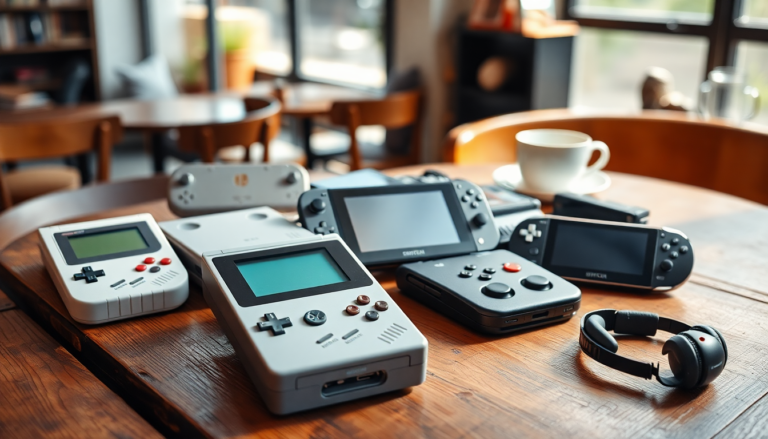Argomenti trattati
Handheld gaming consoles have come a long way since their inception, evolving from simple electronic devices into powerful gaming machines that fit in your pocket. The journey began in the 1970s with rudimentary electronic games and has since transformed into a multi-billion-dollar industry that captivates gamers of all ages. If you’ve ever found yourself engrossed in a game during a commute or at a coffee shop, you can thank the pioneers of handheld gaming who laid the foundation for today’s devices.
The early days of handheld gaming
The first handheld electronic game was introduced by Mattel in 1976, known as Auto Race. This simple device allowed players to race cars on a small LED screen, setting the stage for a new form of entertainment. This innovation sparked a wave of similar products from various companies, including Coleco and Milton Bradley, who created their own versions of single-game handheld devices. By 1978, the Merlin console emerged as the first commercially successful handheld console, selling over five million units and solidifying the market’s potential.
Fast forward to 1979, the Milton Bradley Microvision took handheld gaming to the next level by introducing interchangeable cartridges. This was a game-changer, allowing players to switch between different games without needing a new device. The concept of cartridge-based gaming was revolutionary and laid the groundwork for future handheld consoles, ultimately leading to the iconic Game Boy.
Nintendo’s impact on handheld gaming
Nintendo entered the handheld market in 1989 with the release of the Game Boy, which became a cultural phenomenon. The Game Boy’s success was not only due to its innovative design but also because it came bundled with a killer app: Tetris. I remember when my friends and I would compete for high scores during lunch breaks; it was a bonding experience that transcended generations. The Game Boy sold over 118 million units worldwide, making it one of the best-selling gaming consoles of all time.
Following the Game Boy, Nintendo continued to innovate with devices like the Nintendo DS, which introduced dual screens and touchscreen capabilities. This not only enhanced gameplay but also attracted a wider audience, including those who might not have considered gaming before. The DS sold over 150 million units, further cementing Nintendo’s dominance in the handheld market.
The rise of competition
While Nintendo was busy capturing the handheld gaming market, competitors like Sony entered the fray with the PlayStation Portable (PSP) in 2004. The PSP aimed to provide a multimedia experience, combining gaming with music and video capabilities. Despite its impressive hardware and library, it struggled to dethrone the Game Boy’s popularity, mainly due to Nintendo’s strong brand loyalty and extensive game library.
As technology advanced, so did the features of handheld consoles. The introduction of the PlayStation Vita, released in 2011, brought dual analog sticks, a vibrant OLED screen, and online connectivity. However, despite its technical prowess, it failed to achieve the commercial success of its predecessors, highlighting the challenges of competing with Nintendo’s well-established franchise.
The modern era of handheld gaming
Today, handheld gaming consoles are more powerful than ever, blending the lines between traditional gaming and mobile technology. The Nintendo Switch, released in 2017, introduced a hybrid model that allows players to enjoy games at home or on the go. This versatility has resonated with gamers and contributed to its incredible sales figures.
Looking ahead, the future of handheld gaming seems bright. With the anticipated release of the Nintendo Switch 2, gamers can expect even more innovative features tailored to enhance the gaming experience. The gaming landscape is ever-evolving, and as technology continues to progress, so too will the devices we use to play our favorite games.
A personal reflection on handheld gaming
As a tech enthusiast, I find myself reflecting on the evolution of handheld gaming consoles and the impact they have had on my life. I remember the excitement of unboxing my first Game Boy, the hours spent lost in the pixelated worlds of Pokémon, and the joy of sharing that experience with friends. Handheld gaming has not only provided entertainment but also fostered connections and memories that last a lifetime. It’s fascinating to see how far we’ve come, and I can’t help but feel excited about what the future holds for handheld gaming.

